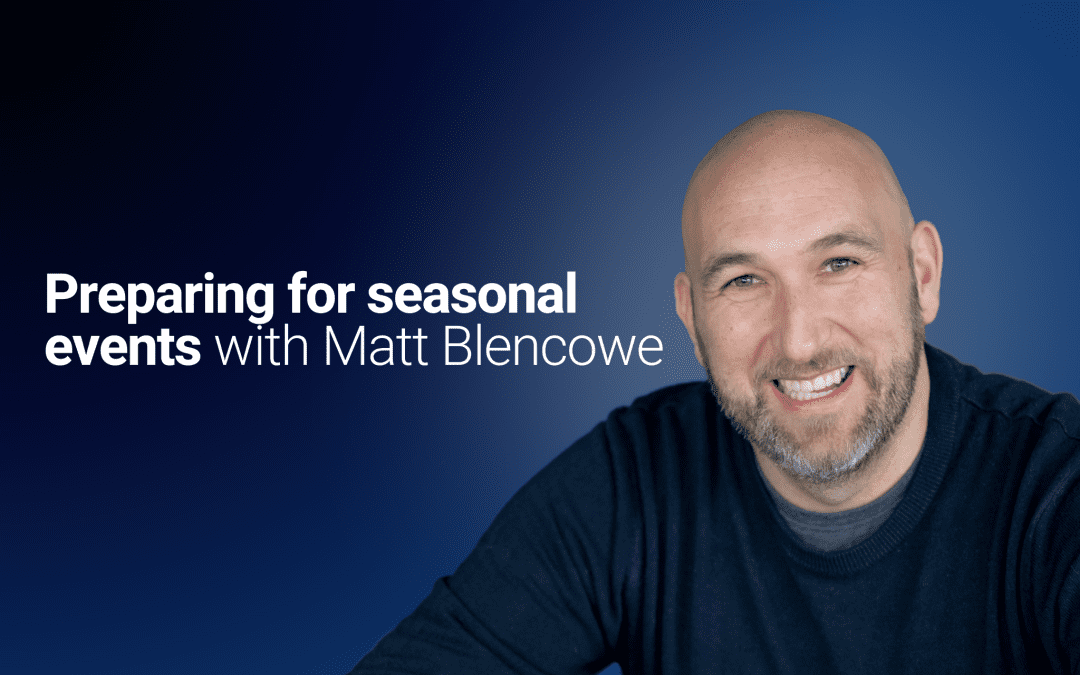
If you’re looking to strengthen your brand power and dominance in the retail market, gaining brand insights should be the first step you use to help you achieve the results you’re looking for.
Brand insights will enable you to understand how your brand is perceived and will reveal also how it performs. Alongside this, you’ll have a deeper understanding of your brand’s strengths, weaknesses, and competitive stance. Ultimately, brand insights consist of any data that points to how you’re doing and where you might need to make improvements, to avoid hindering potential growth. Once you have all this, you’ll have the valuable information you need to build a helpful structure that allows you to refine and shape your in-store strategy.
Did you know that it was recently reported that businesses who use data-driven strategies drive five to eight times as much ROI as businesses that don’t? By leveraging these insights, you can make informed decisions that enhance the shopping experience, boost sales, and build stronger customer relationships.
In this article, we’ll explore what brand insights are, how to collect them, and four effective ways to use them to improve your retail strategy. We’ll also discuss how you can trust in our services to make this whole process a breeze.
Brand Insights: What Are They?
Brand insights are data-driven understandings that reveal how consumers view and interact with your brand. These insights can include:
- Customer opinions
- Behaviours
- Preferences.
A brand insights platform may also reveal trends that impact your brand’s performance in the market.Before you launch a new campaign, it’s worth obtaining brand insight to ensure that your target audience are aligned with your brand and your products. IBM reported that a massive 62% of retailers report gaining a competitive advantage from information and data analytics. Unfortunately, there are businesses who still don’t see the value of brand insights and are consequently hindering their growth potential due to not driving action in the right areas.
If you’re a brand looking to build brand awareness, brand perception, brand trust, as well as establishing your value and mission – you’ll have a hard time doing so without brand insights!
How Can I Collect Insightful Brand Insights?
Ultimately, brand insights examples are your fuel for creating winning strategies. To get the motor running, the best place to start is with your existing consumers.
You’ll need to find out what you can about them and learn:
- Who they are
- What they’re looking for
- How they typically behave
To gain this information, more traditional research methods may be preferable.
Your main objective is to develop a comprehensive profile of your consumer. This includes identifying different segments, personas, and customer journeys, as well as uncovering their potential pain points and emotions.
By understanding your customers’ mindset and empathising with their needs, you can forge a more meaningful and lasting connection with your audience. Supporting this, it was discovered that 53% of people say they feel connected when a brand’s values align with their own.
This shows us the importance of identifying what those values are to ensure that you’re making your customer feel understood and valued. If you fail to do this, they are more likely to turn to your competitors.
Typical questions that consumers may be asked that would reveal helpful insight about a brand could include:
- How would you describe our products to a friend?
- What do you think about our current pricing?
- How did you first hear about our brand?
- Who would you consider our main competitors to be?
These questions will provide valuable, qualitative information that can be turned into metrics that reveal customer satisfaction with a brand, brand loyalty, and customer behaviour/buying patterns.
If you’re looking to collecting brand insight, here are some methods to consider:
- Customer Surveys: Directly ask your customers about their experiences and opinions through online surveys, feedback forms, and in-store questionnaires.
- Social Media Monitoring: Track conversations and mentions of your brand on social media platforms to understand public sentiment and identify trends.
- Sales Data Analysis: Analyse sales data to identify patterns and correlations that can provide insights into consumer behaviour and product performance.
- Market Research: Conduct studies and focus groups to gather qualitative data on consumer preferences, attitudes, and motivations.
What’s Next?
Once you’ve done this, it may be a good idea to cast a lens on your competitors. It would be a good idea to look into who they are, what they do, and how they differentiate from you. To help identify any strength and weaknesses, it may be useful to conduct a SWOT analysis or competitor matrix to help you identify where you are in terms of your competition.
The goal is to find the gaps, niches, and trends in your market, and to differentiate your brand from the competition.

4 Ways to Use Brand Insights to Improve Your Retail Strategy
Once you have collected and analysed your brand insights, you can use them to refine and enhance your in-store strategy in several impactful ways.
1. Determine Your Strengths and Weaknesses
Brand insights are a great tool in identifying what your brand does well and where it falls short. By understanding this, you can amplify where you excel to help you attract and retain customers. Conversely, recognising any weaknesses allows you to address and improve these areas.
For example, if customers praise your customer service but criticise product availability, you can focus on improving inventory management to ensure popular items are always in stock.
2. Fuel Your Creative Campaigns
Now that you’ve got the important information you need, you can now turn these insights into strategy using what you’ve learnt as a goldmine for creative inspiration.
By understanding what resonates with your customers, you can develop marketing campaigns that are more likely to capture their attention and drive engagement. For instance, if your retail data reveals that customers respond well to influencer/celebrity engagement, you may seek to incorporate this into your strategy. Alternatively, if your customers respond well to personalisation, it may be a good idea to revamp your customer loyalty program to offer tailored offers and promotions.
3. Raise Awareness of Your Brand
Its too much of a gamble to make decisions based on your gut feelings, that’s why brand insights examples are useful in guiding your efforts to increase awareness and visibility. By identifying the channels and platforms where your target audience are most active, you can strategically place your marketing messages to reach a broader audience.
You may discover that your consumer is more active in-store rather than online, which would then tell you that you may need to create more engaging merchandising solutions.
Additionally, insights into customer preferences and behaviour can help you tailor your messaging to be more relevant and appealing, boosting the effectiveness of your awareness campaigns.
4. Identify Your Target Audience
A clear understanding of your target audience is crucial for any successful retail strategy, allowing you to create targeted marketing efforts. Without a clear idea of who your customers are and their objectives, it’s difficult to create marketing campaigns that resonate with them.
By having a greater understanding of key factors like the age, location, and buying power, you’ll be able to build an in-depth profile of your ‘ideal customer’. Once you have this, you can dive deeper into understanding their specific needs and desires. This will help you to enhance their shopping experience by creating experiences that foster greater loyalty to your brand.
Take Your Brand on the Ultimate Journey
Its clear that the best way for a brand to ensure longevity is by utilising the right tools and information to help them drive success.
Brand purpose insights are not just throwaway data, they possess the ability to illuminate the path towards meaningful consumer connections, innovative strategies, and impactful messaging. They can transform the consumer relationship by understanding their deep-seated needs, emotions, and behaviours, allowing brands to transcend superficial interactions into lasting relationships.
It’s worth noting that the process of gaining brand insights should be a continuous research project that brands carry out frequently.As markets evolve and consumer behaviours shift, brands must stay agile – revisiting and refining their retail data to remain tapped into to their audience’s evolving mindset and the shifting environment.
Here at Tactical Solutions, we help brands to harness valuable data from a variety of sources which can help them to understand consumer behaviour and market trends. We can collect, harness, and read retail data from every step in the entire shopper journey to help inform brands on how best to gain engagement and conversations. By utilising a mix of industry leading tech, AI and machine learning, we can improve our clients’ sales, availability and exposure.
Our team of experts carry out 3,700+ in-store data-led calls a week which enables us to gain insight into where our clients are winning, where they’re losing, and where there may be opportunities to improve. During these calls, our team of experts gets down to the nitty gritty of your products, identifying weak spots in your product presence on shelves and in store, before implementing data-led solutions that not only solve, but improve, results.By blending this data into Reapp’s mix, brands can serve up instant insights that are crucial for effective and strategic decision-making.
Contact us today to learn how we can help you acquire brand insights for your business.
Whether you’re on your data-led journey or you’re looking to fine-tune your brand identity, we can give you the retail insights you need to transform your strategies.




